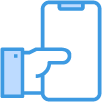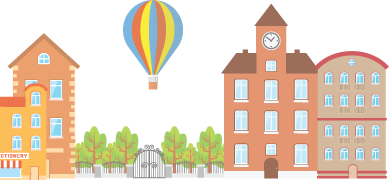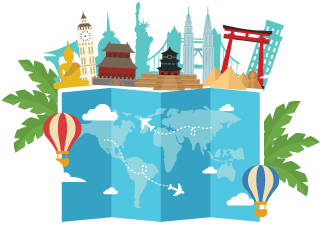-
Capital:
Oslo
-
Currency:
Norwegian krone
-
Time zone:
UTC+1 (CET)
-
Driving side:
Right
-
Country calling code:
-
Language(s):
Norwegian
Norway: An overview
The nature of Norway is its nature. Settled along the Barents, Norwegian, and North Seas, this Scandinavian country is home to famous fjords so dark and deep them seem infinite and mountains steep they seem to reach the heavens. While the Kingdom of Norway is not a member of the European Union it is a member of the Schengen Area (since 2001) and welcomes more than 33 million tourists each year. Most are drawn to the captivating landscape, yet there is so much more―sophisticated cities, a vibrant cultural life, striking Scandinavian architecture, a rich complex history. The cosmopolitan capital, Oslo, sings with a vivacity from its rich cultural scene, juxtaposed with its dynamic past. Outside the cities touring Norway takes visitors, eye shining in delight, past glassine waterfalls, lush countryside, towering forests, blue-white glaciers, through a breath-catching landscape that is long on splendor.
Travel Documents
Your passport must be valid for at least three months beyond your planned date of departure from the Schengen area. You must have at least one blank page for stamps in your passport. If your stay is beyond 90 days, you will need a Travel Visa. If you are a citizen of and ETIAS-eligible country, you will need an approved ETIAS to travel to Norway beginning in 2021. Learn more about the application process and sign up for ETIAS alerts to get the latest news.

Norway : An Overview
Morgedalsvegen 36
0378 Oslo
Norway
Phone: 21 30 85 40
Web site: https://no.usembassy.gov

Emergency Norway Telephone Numbers
| Police: |
112
|
|---|---|
| Ambulance: |
113
|
| Fire and Rescue: |
110
|
| European Union's universal emergency number: |
112 (112 is the equivalent to 911 in the US)
|
Where to Go
-

The City
The capital of Oslo, with its artful blend of Scandinavian and Northern European architecture, is alive with a vibrant energy and a mellow pace. Known for phenomenal arts and music scenes, vanguard cuisine, and a thriving tourist pulse, there is an unmistakable metropolitan dynamism here. Yet this is a city that also holds an inspiring connection to nature. Sightseeing adventures are overflowing; Gustav Vigeland's thought-provoking people-pillars, the ultra-modern Oslo Opera House, the Holmenkollenbakken (Holmenkollen Ski Jump), the Royal Palace, Nobel Peace Center. Vikingskipshuset, a Viking ship museum, offers a unique glimpse at the age of the Vikings, and Oslo’s new Promenade―where city meets fjord―offers 9km of city and waterside experiences, adventures, and views. Accommodations in and around Oslo range from designer to eco-friendly to hostel to the landmark Grand Hotel.
-

The Fjords
The epic drama of Norway’s fjords cannot be understated. The word, “Fjord,” a Viking phrase, loosely translated means where you travel across. For travelers today it is synonymous with deep dark water and breathtaking mountain scenery. Nærøyfjord is one of the narrowest fjords in Europe, this “arm” to the famous Sognefjord is banked by soaring mountain cliffs. Hailed as one of the most beautiful of all the fjords in Norway it is close to sweet little farms complete with goats contentedly nibbling grass, windswept snowfields, dancing waterfalls and adorable villages. Hardangerfjord runs inland from the Atlantic near Bergen for 179 km to Hardangervidda, northern Europe’s largest plateau. Bergen is a postcard-pretty seaport town featuring brightly colored wood houses, a lively wharf, galleries, shops, and a funicular railway that rises to the mountaintop for incredible views of the sights below. It is the embarking point for cruises along this celebrated fjord. Nearby is hiking and skiing at Lillehammer Olympiapark. Insta-perfect waterfalls, rugged mountains, and waterside towns pepper Norway’s popular fjord regions. #nofilterneeded
-

Neighboring Countries
Norway is bordered by Sweden, Finland, and Russia, and is separated from Denmark by The Skagerrak (Strait). Norway, Sweden, Finland, and Denmark are members of the Schengen Area and will be eligible for travel to travelers with an ETIAS visa waiver for entry beginning in January of 2021.
Travel Tips
ELECTRICAL OUTLETS AND ADAPTERS FOR US PRODUCTS
Norway uses C, & F Plugs. You will need an adapter and maybe a transformer to use products made for the US electrical grid. Norway runs on a 230 (220) volts, 50 hertz AC current, while US runs on 120 (110) volts and a frequency of 60 Hz AC current. Many American products are able to run on 230 (220) volts, 50 hertz AC current. You need to check your electrical product to make sure it is labeled "dual voltage" before you plug it in, otherwise you may burn out the components rendering it useless. Learn more about the different European plugs and currents here.
PICKPOCKETS AND THEFT
Nearly all crimes suffered by tourists in Norway are nonviolent and avoidable, however you should be prepared for pickpockets. Europe’s transit systems are notorious for pickpockets.
- Being vigilant is your best friend when you are in high theft areas: train stations, trains, city buses, subways and open air shopping areas.
- Store important documents, money and phones in zippered or buttoned pockets, specialized travel day bags or a money belt.
- You should never leave your bags unattended! Make sure you can see them at all times. Better yet, you should keep in physical contact with your bags in public places.
MOBILE PHONES
First, be sure to check that your phone will work in Norway. The easiest way to find out is to check with your mobile phone service provider. You can also find out if your service provider offers international plans for Norway. We recommend signing up for an international plan if you plan on using your smart phone to connect to the internet or use the travel apps you may have installed on your phone. If you decide not to sign up for an international calling and data plan, costs can add up very quickly!
Free WI-FI can be easy to access, but can be very slow or not available in the countryside. Sign up for a Virtual Private Network (VPN) services to secure your phone, tablet or computer when using public Wi-Fi networks. This prevents hackers from accessing your device when using free Wi-Fi.
EUROPEAN TAXIS, BUSES AND SUBWAYS
- Taxis - A good rule of thumb is use a prominent taxi service, one that has a company logo and a telephone number on the car. Avoid using taxis that just have a taxi light on the top of the car. Make sure the taxi driver is using the correct rate for the time of the day and day of the week. Nighttime and weekends have higher rates. When taking a taxi that has a set fare, for example to a Norway airport, make sure you establish the price before you leave.
- Buses and subways - Most European cities have a great public transportation system. The cost of a transit pass for the entire time of your stay can equal the cost of one or two taxi rides. Check out the ticket options that are offered at subway stations, bus terminals and train stations. Get a transit map or download a transit app to your smart phone. Google maps have transit maps for most Norway cities.
EXCHANGING CURRENCY IN NORWAY
The most important thing you should understand is how exchange rates work. The Euro usually has a higher exchange rate compared to the US dollar. So if you want to get 100 euros and the exchange rate is $1.10 for one euro, it will cost you 110 dollars to get 100 euros. There are many currency conversion apps you can down load to your smart phone to get up-to-date exchange rates.
Many people like to get Euros through their bank before they leave for their trip. Check out what fees the bank charges for this service. Different banks have different fees. These fees can be expensive, so it pays to shop around.
When in Norway avoid using currency exchange companies or booths. These companies can charge up to 15% to 20% of the amount you are exchanging. Norway banks can also charge high fees to exchange money. You best bet is to use your ATM card with an established bank to get local currency.
DEBIT CARDS AND ATMS
First, make sure that your ATM card can be used internationally. Second, see what your bank charges for international ATM fees. Third, see what is the maximum amount you can withdraw each day. While there are fees associated with using an ATM card, they are usually much less than the fees charged by Norway banks and currency exchange companies. ATM fees are a flat fee not a percentage. So when you are withdrawing money using your ATM card, take out the maximum amount to reduce amount of ATM fees you will incur. Also it is a good idea to use bank ATMs instead of third party ATMs, which can charge higher fees.
CASH VS CREDIT CARDS
Using local cash is key for the European tourist. Some businesses do not accept credit cards and many businesses charge a higher price when using a credit card due to the credit card fee they pay to the credit card company. Many businesses will take US dollars, but then you will need to figure out the exchange rate to ensure you are being charged the correct amount and receiving the correct change. Having smaller bills is better than large bills. Also remember to keep your cash secure in pickpocket proof pockets or a money belt.
US credit cards are widely accepted across Norway. Just in case, check with bank to be sure your credit card will work in Norway. Before you leave on your trip, sign up for a credit card that has no foreign transaction fees. If you don’t, you may be in for a surprise when you get your credit card statement that contains lots of foreign transactions and currency conversion fees.
It makes sense to use a credit card for hotels, car rentals, Eurail pass, upscale businesses and restaurants. Limit the number of credit cards you take with you. Bring one back up credit card in addition to the main card you intend to use. Be sure to contact your credit card company and let them know the dates you will be traveling abroad.
TIPPING IN NORWAY
Generally speaking, if someone in the service industry provides great service for you, a tip of a couple of euros is acceptable, but not required.
- Restaurants - 5% to 10%, with 10% being for over the top service. Be sure to check to see if service has already been included in the bill
- Taxis - round up to the nearest Euro, for example, if the fare is 5 euro give them 6
- Hotel porters - one euro for every bag
Medical Information
Here’s the good news: most of Europe, including Norway, has a universal health care system that takes care of everyone – including foreigners. If you need healthcare due to illness or injury while traveling in Norway, you won’t have to worry about getting treated. There will be out-of-pocket costs, but those are generally reimbursable depending on your health insurance.
IMPORTANT HEALTHCARE HINTS
- Pack enough of any prescription medications for the length of your stay, in their labeled, original containers. It is smart to add a few more pills than you need, just in case you stay longer.
- Bring a small first aid kit with over-the-counter necessities.
- In an emergency call 112, that’s the “911” in Europe.
- If you have a non-emergency health issue, go to the nearest pharmacy first. Norway pharmacists can actually diagnose and prescribe medications for minor issues like sore throats, sinus and stomach issues and minor aches and pains.
- If the pharmacist can’t help you, go to a clinic. They’re much like our stateside urgent care clinics, and providers can order any tests you might need like x-rays.
- Ask for a House Call. Your hotel will most likely be able to have a physician come to your room if need be.
- Most embassies and consulates have lists of physicians and hospitals in major cities. Go on the U.S. Embassy’s site, choose your destination and look under U.S. Citizens Services section.

